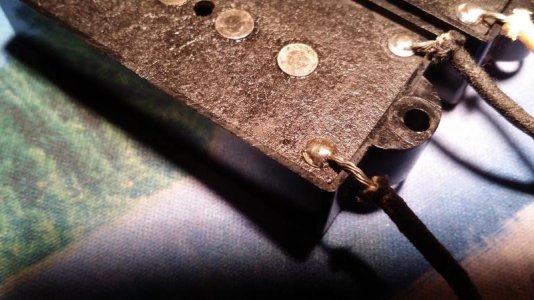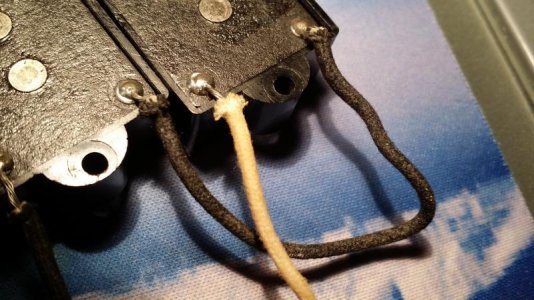frank orlando
New member
Hello, First post on this forum!
I acquired the P-Bass pickup shown in the attached pics below. I was told it was a mid 60's era Fender pickup. The tops of the pole pieces have beveled edges (not flat), it has black bobbins, dark burgundy colored (enamel?) windings and it has cloth covered wire leads. They read 10.46 ohms. At first glance it looks like it can be any number of manufacturers "vintage" pickup offering but the previous owner stated it was a vintage Fender pickup. If you have expertise in identifying P-Bass pickups and can tell me if it is in fact Fender or the brand and anything else about it, I would be very appreciative. I'm hoping the pictures showing the bobbin design, 3 holes punched in the top and bottom of the bobbin, beveled top surface of the magnets, method used to attach the leads, etc. will be tell-tale in determining the brand. Thank you! Frank
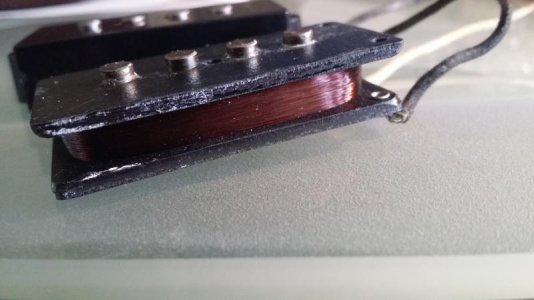
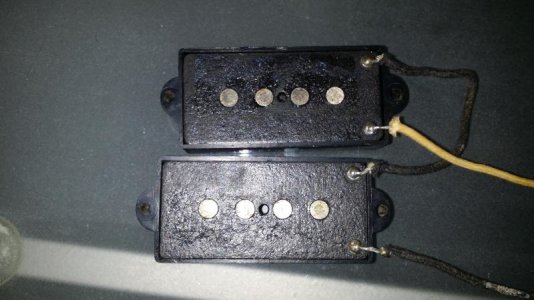

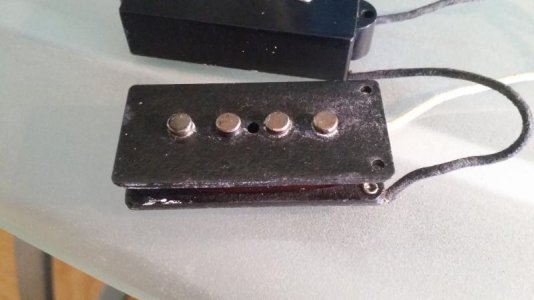
I acquired the P-Bass pickup shown in the attached pics below. I was told it was a mid 60's era Fender pickup. The tops of the pole pieces have beveled edges (not flat), it has black bobbins, dark burgundy colored (enamel?) windings and it has cloth covered wire leads. They read 10.46 ohms. At first glance it looks like it can be any number of manufacturers "vintage" pickup offering but the previous owner stated it was a vintage Fender pickup. If you have expertise in identifying P-Bass pickups and can tell me if it is in fact Fender or the brand and anything else about it, I would be very appreciative. I'm hoping the pictures showing the bobbin design, 3 holes punched in the top and bottom of the bobbin, beveled top surface of the magnets, method used to attach the leads, etc. will be tell-tale in determining the brand. Thank you! Frank




Last edited:


